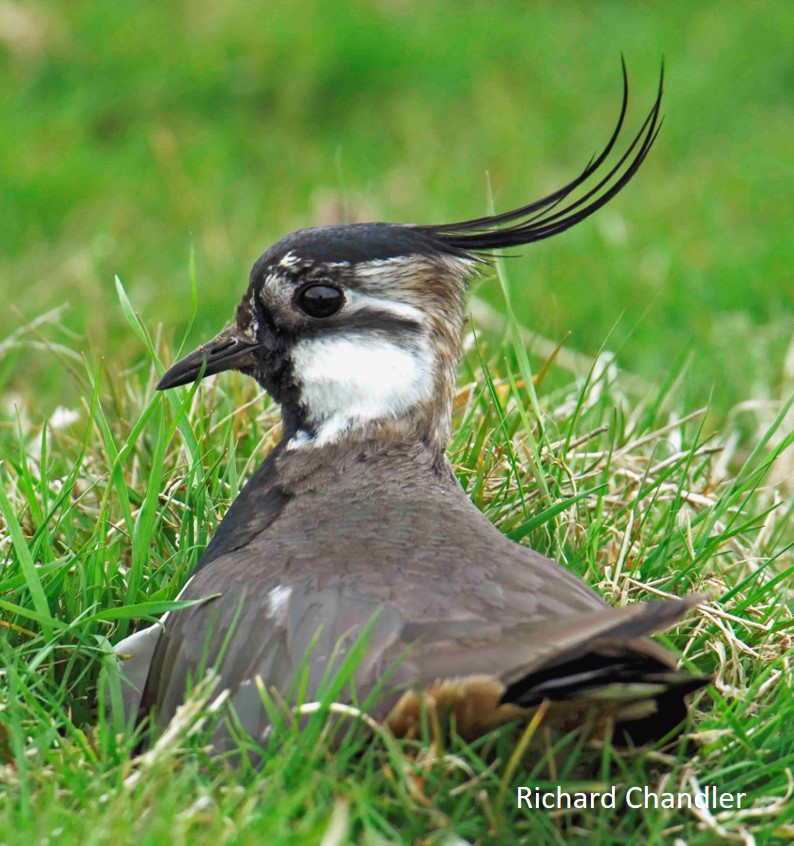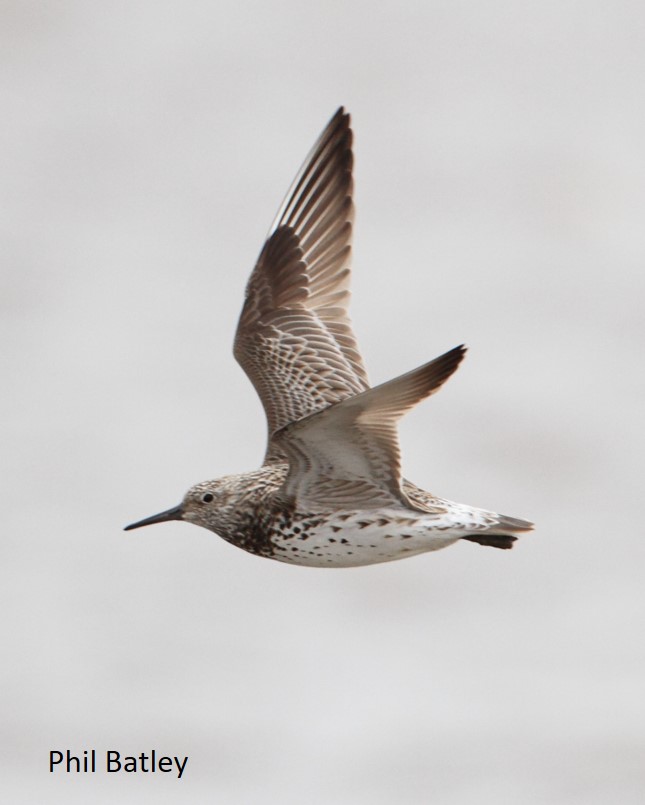The BTO longevity record for a wader is held by an Oystercatcher that was ringed as an adult in Lincolnshire on 30 July 1976 and shot in France on 4 September 2017, 41 years 1 month and 5 days later. It was an adult when ringed so will have been at least 43 years old when it died.
The second oldest Oystercatcher was ringed as a chick by Adrian Blackburn in Lincolnshire (east coast of England) on 14 June 1970 and last caught by the Wash Wader Ringing Group on 16 July 2010, in virtually the same bit of the county. The time between ringing and last capture was 40 years 1 month and 2 days. Perhaps this bird is still alive and has celebrated its fiftieth birthday?

Just to put records for British & Irish waders into context, the record for seabirds was set by a Manx Shearwater, at 50 years 11 months and 21 days, for waterfowl it’s a Pink-footed Goose (38 years 7 months and 7 days) and the longevity record for a passerine was set by a Rook (22 years 11 months 0 days).
This blog summarises records from the BTO Ringing Scheme between 1909 and 2022. These longevity records might be useful for a bird club quiz but they tell us very little about the health of wader populations. The real thing that is of interest is survival rates. Measuring the proportion of adult birds that survive through until the next year turns out to be exceptionally important to our understanding of wader conservation. There will be more about this later.
Records from the BTO scheme
The list of records below is taken from the Online Ringing Report, produced by the British Trust for Ornithology. (The link to the longevity records can be found at the bottom of the web-page). The report covers all birds ringed and/or reported in Britain & Ireland up until the end of 2021. I aim to update this blog shortly after each new annual report is published.

For each species, longevity is defined as the time between ringing and the most recent report of that bird. For a chick, this figure is virtually equivalent to age but a bird first ringed when already an adult may be many years older than the longevity figure. The third column is the number of birds ringed for each species (up to the end of 2021). Records for species of which fewer than 3000 individuals have been ringed may be unrepresentative, given that small sample size might affect the longevity record. With fewer birds being handled, the chance of catching a bird that is going to live a long time is low, as is the chance of it being caught again many years later.
In common with most groups of birds, the longest-lived ones are the biggest. Only Oystercatchers, Curlews and Bar-tailed Godwits have so far broken the 30-year barrier. At the other end of the scale, for smaller species, only the Ringed Plover has reached 20 years.

With the passage of time, two things get older, the bird and its ring (or three things, if you think about the age of the ringers). Early rings were made of alloys of aluminium and these deteriorated quite rapidly, especially in salt water. Many of these rings will have given up long before the birds that were ringed. The widespread introduction of harder alloys in the 1970s has helped to increase longevity records.
Species such as Turnstone still wear out their rings and the oldest Oystercatchers are often birds that have carried two or more rings during the course of their lives. Such replacements only take place in areas where long-term studies are taking place, as was the case for the 40-year-old Oystercatcher mentioned above. It was first ringed as SS58540 but also known as FC15938 and FP99170.
Another factor affecting our ability to appreciate just how long a wader can live is the use of colour-rings. The record-breaking Black-tailed Godwit is currently EF90838. This bird was hatched from an egg in Iceland in 1977 and received a metal ring on 24 October that autumn, at Butley in Suffolk. Many east-coast Black-tailed Godwits moult on the Wash (between Lincolnshire and Norfolk) and this bird was caught there in 1993. Already 16 years-old, it received two colour-rings that identified it as a bird taking part in a new Wash-based study, but not as an individual. In 1996, it was caught on the Wash again and given an individual set of rings. It was never caught again but was seen many, many times – most recently on 12 April 2001 by the late John Parslow.
Getting old

The annual renewal of a wader’s feathers enables an unringed individual wader to hide its age. The picture alongside was taken by Allison Kew, of the Wash Wader Ringing Group. This ringed Oystercatcher was well into its thirties at the time – older than any of the people in the photograph.
If still alive then a bird will migrate and attempt to breed in the same way as in the previous year, repeating the process for decades. Senescence probably kicks in eventually; there is some evidence of lower annual survival and reduced breeding success at the upper end of a species’ life-span. Long-term colour-ringing will enable this topic to be explored further in due course.
Survival
As mentioned earlier, although the longevity of a species might tell us something about annual survival rates, in that birds with high longevity almost certainly have the highest survival rates, being able to measure the proportion of adult birds that survive from one year through to the next is far more valuable.

Waders adopt a ‘high-survival and low breeding-output’ strategy. Most waders have an annual survival rate of between 70% and 90%. This means that a pair of Lapwings, for instance, only needs to raise an average of 0.7 chicks per year to maintain a stable population. Unfortunately, this is not easy to achieve, as you can read here.
The occasional good breeding season can give a real boost to population levels, as we saw for Icelandic Black-tailed Godwits in the summer of 2017, as you can read here.
By collecting records of colour-ringed birds it is possible to measure the annual survival rates of wader populations, as explained here in this blog about Bar-tailed Godwits.

When survival rates drop, the effect on population levels is immediate and dramatic, as discussed in this blog about the waders that use the Yellow Sea. Populations of Bar-tailed Godwit, Red Knot and Great Knot that winter in Australia and New Zealand were particularly badly affected by habitat removal, leading to a sudden drop in survival rates and rapid declines in numbers.
There is a global review of survival rates in this paper: Méndez, V., Alves, J. A., Gill, J. A. and Gunnarsson, T. G. (2018), Patterns and processes in shorebird survival rates: a global review. Ibis. doi:10.1111/ibi.12586. The paper is summarised in this WaderTales blog: Measuring shorebird survival.
Please help to measure survival rates
The chance of finding a ringed bird that breaks a current longevity record is tiny but every birdwatcher who reports a colour-ringed wader is helping to monitor survival rates. If you have ever done so – thank you.
WaderTales blogs are written by Graham Appleton, to celebrate waders and wader research. Many of the articles are based on previously published papers, with the aim of making wader science available to a broader audience.
Pingback: Waders are long-lived birds! | wadertales – Wolf's Birding and Bonsai Blog
Reblogged this on Nature-Watching in Europe and commented:
I’m always amazed at how long some of these birds, especially the smaller ones, can survive. I try to report sightings of colour-ringed birds – providing I can get detail on the rings and which legs, etc – to add to the general information about movements and longevity.
Thanks for the summary.
LikeLike
Pingback: Technopole update, Lac Rose & more | Senegal Wildlife
Pingback: Measuring shorebird survival | wadertales
Reblogged this on Wolf's Birding and Bonsai Blog.
LikeLike
Pingback: Fewer Spotted Redshanks | wadertales
Not a wader but tufted duck has a recorded 40.2 years (http://genomics.senescence.info/species/entry.php?species=Aythya_fuligula)
LikeLike
Pingback: WaderTales blogs in 2018 | wadertales
Pingback: Time to nest again? | wadertales
Pingback: Sixty years of Wash waders | wadertales
Reblogged this on AVISTAMIENTOS and commented:
¡y son longevos!
LikeLike
Pingback: Plovers from the north | wadertales
Pingback: Teenage waders | wadertales
Pingback: Coming soon | wadertales
Pingback: The First Five Years | wadertales
Pingback: Gap years for sandpipers | wadertales
Pingback: When mates behave differently | wadertales
Pingback: Bar-tailed Godwits: migration & survival | wadertales